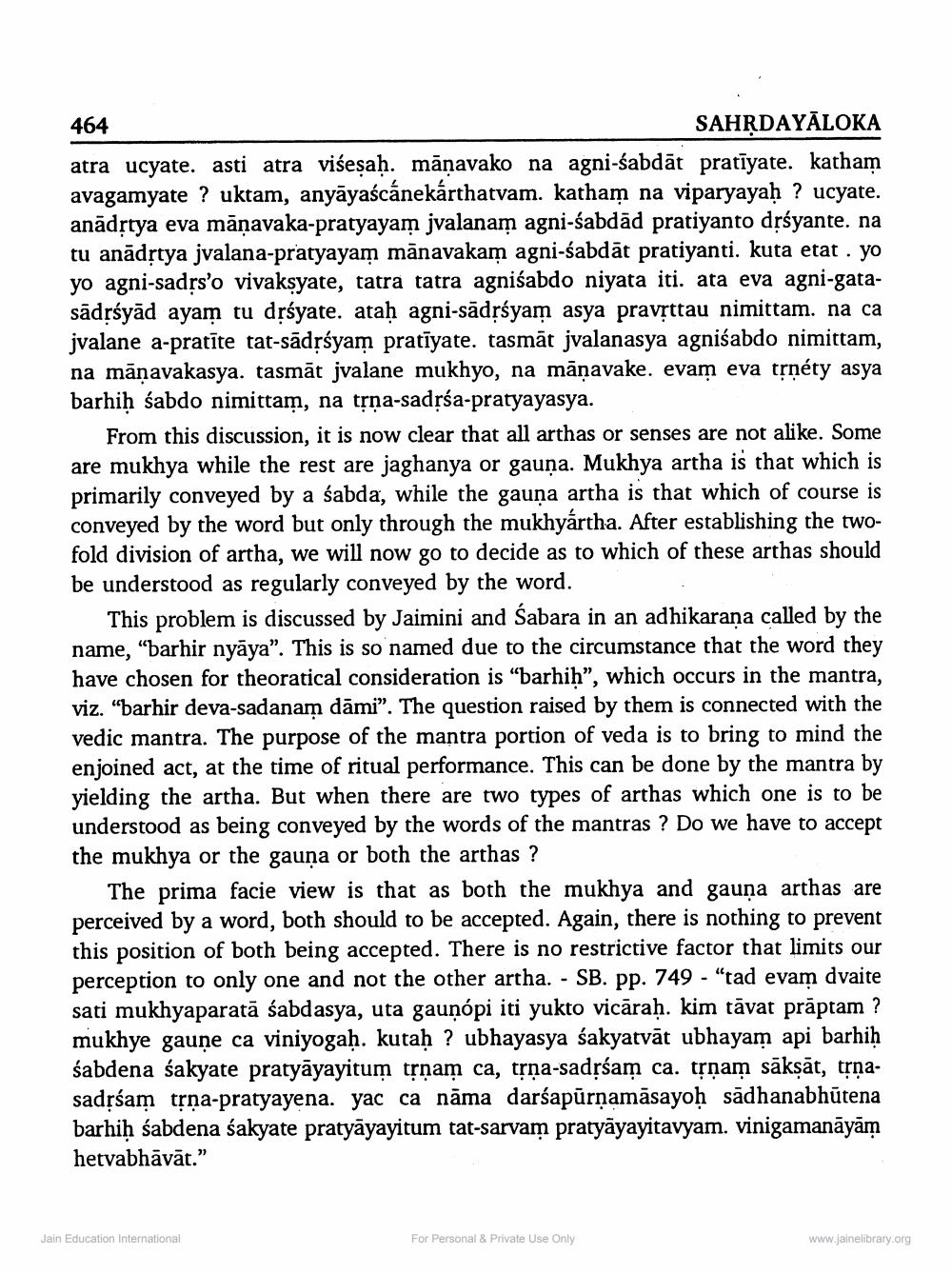________________
464
SAHRDAYĀLOKA atra ucyate. asti atra višesaḥ. māņavako na agni-śabdāt pratīyate. katham avagamyate ? uktam, anyāyaścánekárthatvam. katham na viparyayah ? ucyate. anādstya eva māņavaka-pratyayam jvalanam agni-sabdad pratiyanto drśyante. na tu anādệtya jvalana-pratyayam mānavakam agni-sabdāt pratiyanti. kuta etat . yo yo agni-sadrs'o vivaksyate, tatra tatra agniśabdo niyata iti. ata eva agni-gatasādrśyād ayam tu drśyate. ataḥ agni-sādrśyam asya pravsttau nimittam. na ca jvalane a-pratīte tat-sādņśyam pratīyate. tasmāt jvalanasya agniśabdo nimittam, na mānavakasya. tasmāt jvalane mukhyo, na mānavake. evam eva trnéty asya barhiḥ śabdo nimittam, na trņa-sadrśa-pratyayasya.
From this discussion, it is now clear that all arthas or senses are not alike. Some are mukhya while the rest are jaghanya or gauņa. Mukhya artha is that which is primarily conveyed by a sabda, while the gauna artha is that which of course is conveyed by the word but only through the mukhyártha. After establishing the twofold division of artha, we will now go to decide as to which of these arthas should be understood as regularly conveyed by the word.
This problem is discussed by Jaimini and Sabara in an adhikarana called by the name, “barhir nyaya”. This is so named due to the circumstance that the word they have chosen for theoratical consideration is "barhih", which occurs in the mantra, viz. "barhir deva-sadanam dāmi". The question raised by them is connected with the vedic mantra. The purpose of the mantra portion of veda is to bring to mind the enjoined act, at the time of ritual performance. This can be done by the mantra by yielding the artha. But when there are two types of arthas which one is to be understood as being conveyed by the words of the mantras ? Do we have to accept the mukhya or the gauņa or both the arthas ?
The prima facie view is that as both the mukhya and gauna arthas are perceived by a word, both should to be accepted. Again, there is nothing to prevent this position of both being accepted. There is no restrictive factor that limits our perception to only one and not the other artha. - SB. pp. 749 - “tad evam dvaite sati mukhyaparatā sabdasya, uta gauņópi iti yukto vicāraḥ. kim tāvat prāptam ? mukhye gaune ca viniyogaḥ. kutaḥ ? ubhayasya śakyatvāt ubhayam api barhiḥ śabdena śakyate pratyāyayitum trnam ca, trna-sadṛśam ca. třnam sākṣāt, trnasadỊśam tỉna-pratyayena. yac ca nāma darśapūrņamāsayoḥ sādhanabhūtena barhiḥ śabdena śakyate pratyāyayitum tat-sarvam pratyāyayitavyam. vinigamanāyām hetvabhāvāt.”
Jain Education International
For Personal & Private Use Only
www.jainelibrary.org




